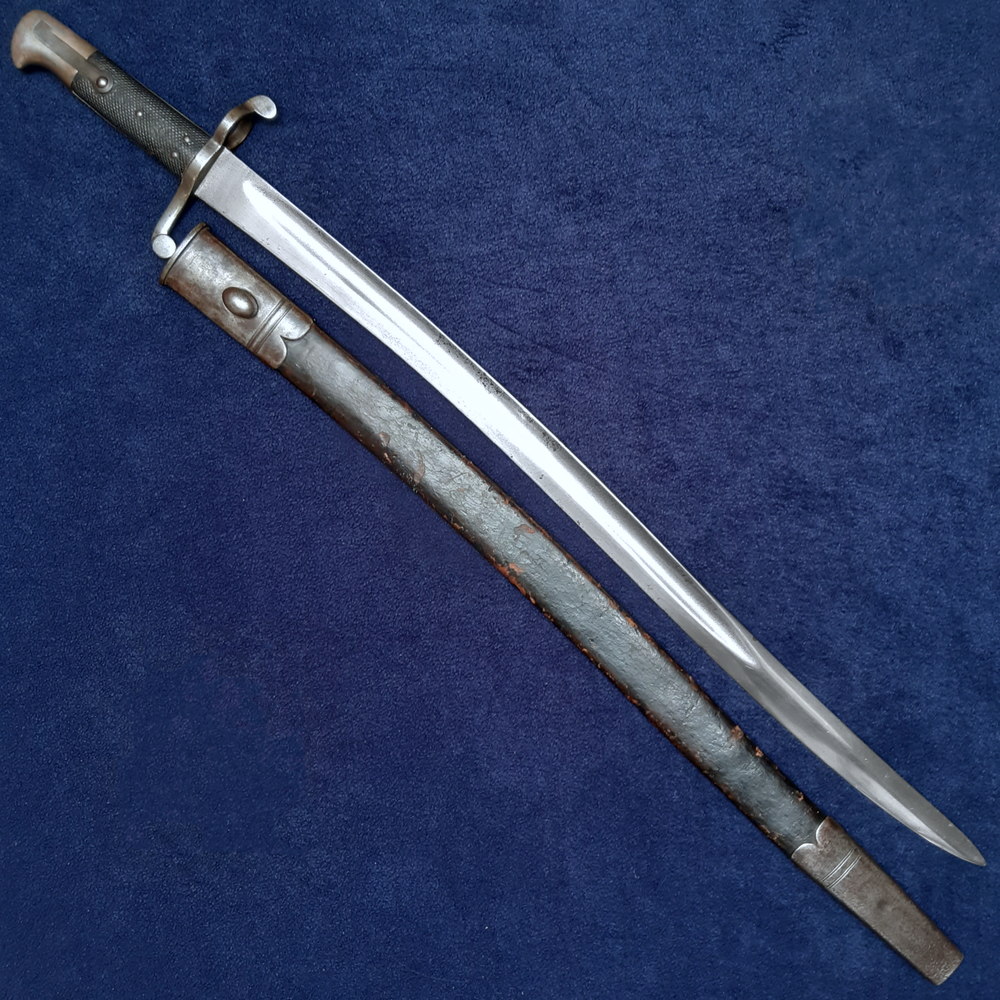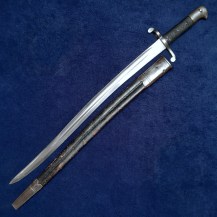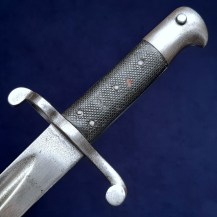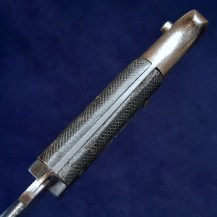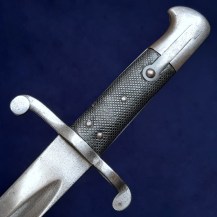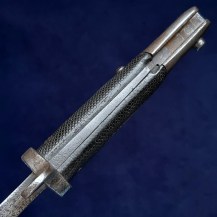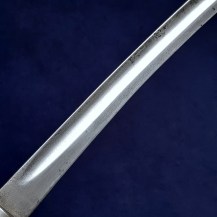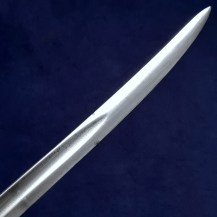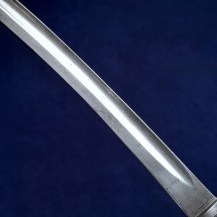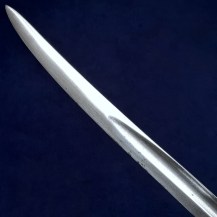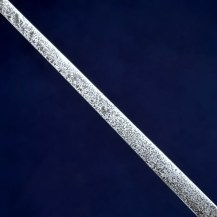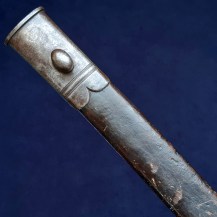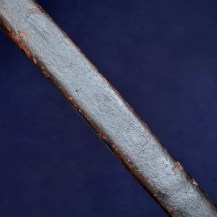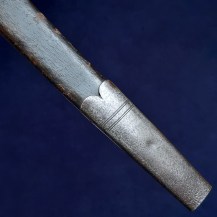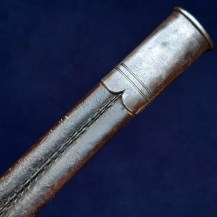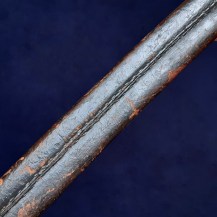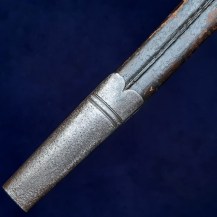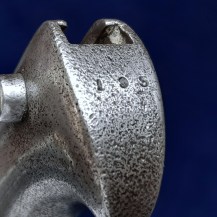British 1856 Pattern Enfield Short Rifle Yataghan Bayonet, First Type
Single-fullered ‘yataghan’ downward-curving blade, cross hilt with lower quillon with round finial, and upper quillon projecting forward from the muzzle ring. Black chequered grips (technically, knurled) of pressed leather, attached to the exposed tang with four rivets. External leaf spring which actuates the locking catch, attached by a one of the rivets. Steel beaked pommel. Black leather scabbard with steel throat and chape pieces, the throat piece with oval frog stud, both with incised lines. Blade 22.7 inches in length (57.7cm), the bayonet 28 inches overall (71.1cm), muzzle ring diameter 20mm.
The pommel is stamped on its end with ‘193’, probably a weapon number. The blade is unmarked. The grip scales are each stamped with a crown inspection mark between the central rivet and the pair near the hilt.
This bayonet was designed for the new Enfield Short Rifle introduced to the British Army in 1856, chambered in .577. The longer 1853 Pattern ‘3-Band’ rifle-musket remained the standard infantry weapon, while the new short rifle was issued on a more limited basis: to sergeants of line infantry regiments, as well as the Rifle Brigade, Cape Mounted Rifles and the Royal Canadian Rifles. Its bayonet followed the model of ‘yataghan’ bayonets introduced for the Martini-Henry carbine, with a long sword blade compensating for the shorter-barreled rifle.
This early version was only produced between 1856 and 1858, manufacture contracted to multiple firms in Britain and Germany. Production records are incomplete but it appears not to have been made in large numbers. After this date some modifications were made including shortening the mortise slot, attaching the spring by a screw rather than a rivet and tightening the tolerances on its manufacture to make the bayonets produced at Enfield truly interchangeable: this more common second version was not a new pattern but is often referred to as the 1856/58 for convenience.
This example would therefore have been hand-fitted to its original companion rifle and it may not necessarily fit every rifle. Compared to references its MRD seems a little small – the standardised 1856/58 measures 20.6mm, for instance.
The crown inspection stamps on the grips of this example confirm that it was a government purchase. These would usually have further markings on the blade but this one appears to have been repolished by a previous owner to restore its appearance, which has removed any markings that were present there.
Areas of cleaned pitting remain at the shoulder of the blade and in the fuller, some more noticeable pitting to the spine, some small spots of patination to the faces of the blade. The edge is undamaged, the tip is rounded. The hilt and pommel have speckled patination and some very light cleaned pitting. The rivets and exposed tang have a dark patina. The leather grips are in good condition with very little handling wear, one spot of damage to the leather on the locking button side. The scabbard fittings have some small shallow dents, some pitting to the chape piece heavier towards its tip. The stitching is open along the upper 2/3 of the leather section, some rubbing and flaking to its surface in places which shows up brown.

